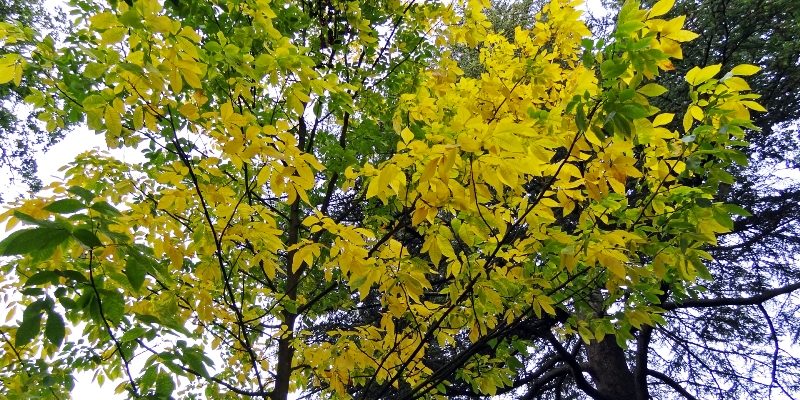THE LEAFLET

Tree of the Month: Pignut Hickory
Carya glabra, also known as the pignut hickory, is June’s Tree of the Month and shares a name with a famous U.S. politician. That’s right, the seventh president of the United States, Andrew Jackson, was also known as “Old Hickory” due to his battle-hardened character. Andrew Jackson was a major general in the army during the War of 1812 when he rallied troops to defend New Orleans and decisively defeat the British forces, setting him on a path to the presidency and earning his reputation as a strict leader and aggressive foe.
Like President Jackson, the pignut hickory is tough and resilient and — unlike Jackson — often grows to a stately size of between 80 and 120 feet. Its range of native growth covers most of the eastern U.S., reaching into Florida in the south and Vermont/New Hampshire in the north while struggling to get past Missouri to the west. Hickories can grow in a variety of soil conditions but are most frequently seen growing on dry ridge tops or on the slopes of mountains, especially along the Appalachians.
Perhaps the most distinctive aspect of the pignut hickory is its nut, which is pear-shaped and has an inner structure similar to a pig’s snout when cut in half. Pignut hickories are prolific nut producers, which help them expand and saturate a forest or grove quickly. Carya glabra also generates a fine source of nutrients for local wildlife, as its nuts contain a high amount of crude fat that is especially useful for animals stocking up for winter hibernation. The leaves are alternating, compound leaves that contain 5 to 7 leaflets that are slightly serrated, but smooth and with a rich green color on top. In the fall the leaves turn to a pale yellow or light orange color.

Andrew Jackson’s earned the nickname of Old Hickory because the hickory species was prized for its wood, which was extremely durable, stiff, and shock resistant. This permitted it to be used in everything from tool handles to stagecoach wheels, to baseball bats and Native American bows. It was also used extensively as firewood because of its density and today is used for smoking meat.
Carya glabra is a monoecious species, meaning that both male and female flowers are located on the same tree, and it can live to a ripe age of over 300 years old. Pignut hickories are generally tolerant of pests but can be severely damaged by a trunk rot caused by Poria spiculosa, which is common to many pignut hickories and results in large burls protruding from the trunk, degrading the tree’s growth and adaptability.
In Washington, D.C. the pignut hickory can be found primarily in Rock Creek Park, and although it is not as widely planted as other trees, they can be found in many parks, sidewalks, and other public places.